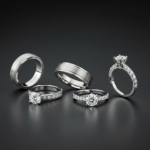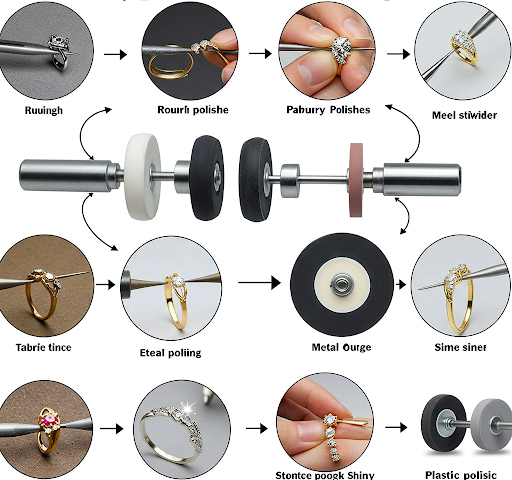
Agarwood for Love: “Romantic Essence” – Attracting Love and Harmony
August 6, 2025
Palladium Jewelry: Lightweight and Durable
August 8, 2025Hello friends, I’m Chuong Gems from Vietnam. Today, I’m excited to share with you comprehensive information about jewelry polishing wheels and how to achieve that perfect shine we all desire for our precious pieces.
Introduction to Jewelry Polishing Wheels
As a jeweler with years of experience, I can’t stress enough how crucial proper polishing is in jewelry making and maintenance. The right polishing wheel can transform a dull piece into a stunning masterpiece that catches everyone’s eye.
Why is Jewelry Polishing Important?
Polishing isn’t just about making jewelry shiny – it’s about preserving its beauty and value. A well-polished piece:
- Resists tarnishing better
- Shows off the metal’s true character
- Looks more professional and valuable
- Lasts longer with proper maintenance
Common Types of Polishing Wheels
1. Fabric Polishing Wheels
These are my personal favorites for delicate pieces. Fabric wheels, especially cotton and muslin wheels, are perfect for:
- Final finishing touches
- Working with precious metals like gold and silver
- Achieving that mirror-like finish
2. Metal Polishing Wheels
Metal wheels, typically made from brass or steel, are excellent for:
- Initial cleaning and surface preparation
- Removing deep scratches
- Working with harder materials
3. Plastic Polishing Wheels
These versatile wheels are perfect for:
- Medium polishing stages
- Working with softer metals
- Achieving consistent results
Using Polishing Wheels for Different Types of Jewelry
From my experience, different pieces require different approaches:
For Rings
Start with a medium-grade wheel and gradually move to finer ones. Be extra careful around stone settings.
For Chains
Use softer wheels and work carefully to avoid catching links.
For Pendants
Choose wheels based on the metal type and detail level.
Tips for Achieving the Highest Shine
- Always work in sequence – start with coarser wheels and progress to finer ones
- Maintain consistent speed and pressure
- Keep your wheels clean and well-maintained
- Use appropriate polishing compounds for each stage
Maintenance and Storage of Polishing Wheels
To ensure long-lasting performance:
- Clean wheels after each use
- Store in a dry, dust-free environment
- Replace wheels when they show signs of wear
- Keep different wheels separate to avoid cross-contamination
Remember, achieving the perfect polish takes practice and patience. Don’t rush the process – take your time to learn how each wheel affects different materials and surfaces.
I hope this guide helps you understand the world of jewelry polishing wheels better. If you have any questions, feel free to ask in the comments below!




